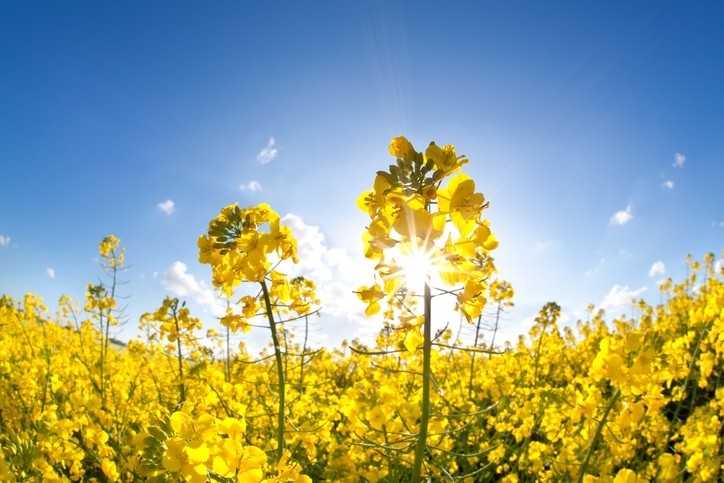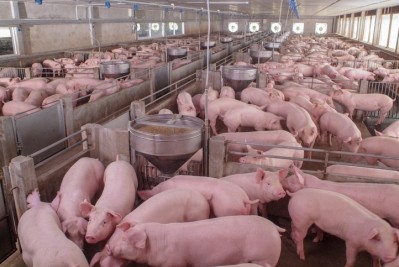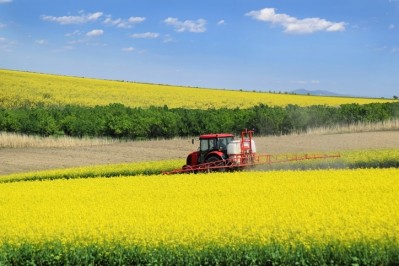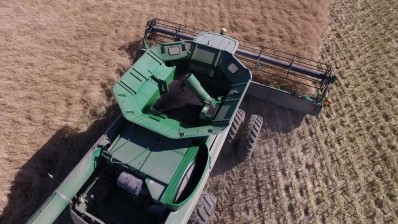New carinata strains may provide promise for use in feed

Information about the potential feed ingredient is part of a larger project moving toward allowing the use of carinata meal as a feed ingredient in Canada, said Peiqiang Yu, corresponding author and professor in the department of animal and poultry science at the University of Saskatchewan.
Along with researchers from the university, he has been evaluating the nutritional elements of newly developed carinata seeds for eventual use in animal feed.
“Carinata seeds are available for industry oil for jet plane, [but] not for human consumption,” he told FeedNavigator. “Carinata meal is not in a CFIA approval feed list. That is why we do research to provide info for feed registration.”
An understanding of the chemical profile of the developed seed lines provides information for both the Cornell Net Carbohydrate and Protein System (CNCPS) nutrition model and nutritional requirements for dairy cattle (NRC) energy model, he said. And the information can be used in the plant breeding program.
The goal of the group’s research, published in the journal of Animal Feed Science and Technology, was to explore the biodegradation and nutritional elements of both yellow and brown carinata seeds when compared to newly established yellow and brown-seeded canola, the researchers said.
The group looked for several elements including “chemical profiles and anti-nutritional compounds, energy values, protein and carbohydrate fractions, and their predicted rumen degradation, rumen degradation kinetics and hourly effective degradation ratios, intestinal digestion of protein, [and] truly absorbed protein supply to dairy cows and feed milk values.”
They found that the levels of glucosinolates in the carinata were reduced from previous varieties.
When compared to newly developed strains of canola, the carinata seeds demonstrated higher feed milk value and increased crude protein levels, the research group reported. They also presented reduced amounts of fiber and ether extract (EE).
The oilseeds should be considered for use as an ingredient in ruminant feed based on the amount of CP, energy, digested protein supply, feed milk value (FMV) absorbed rumen-synthesized microbial protein (AMCP) and metabolizable protein (MP), the researchers said.
Why carinata and canola?
There are about 129m metric tons of plant oils generated annually, the researchers said. The products are used in a plethora of ways.
Canola is an oilseed that was bred to have low levels of erucic acid and few anti-nutritional compounds, however, the plant is not suited for production in hot or dry regions, they said. Carinata is a related plant that grows in semi-arid conditions.
Oilseeds may be included in dairy cattle diets to provide unsaturated fatty acids (FA) that reduce rumen methanogens and boost energy efficiency, they said. This alteration can increase net energy for weight gain and milk production and may limit the degradation of organic matter by limiting dry matter intake (DMI), diet digestibility and support the percentage of milk fat and milk protein yield.
Carinata seed has been considered for use in ruminant feed based on levels of crude protein (CP), but the amount of anti-nutritional compounds including glucosinolates and erucic acid make that usage challenging, said the researchers. Little is known about the potential for carinata seed to be used in ruminant or dairy cow feeds.
The seed coat color in plants from the Brassica family have been linked to seed quality with yellow seeds having less lignin and fiber but more protein and oil than brown-coated seeds, they said. Yellow-seeded varieties of canola and carinata have since been developed.
“Currently, yellow-seeded and brown-seeded Brassica carinata are the lines developed by Agriculture and Agri-Food Canada (AAFC),” they said. “However, differences in degradation and digestion features between yellow and brown carinata seeds are not clear.”
The expectation is that newly developed carinata seeds should have greater nutritional elements that new or commercially available canola seeds and that the carinata seeds could provide a better nutrient supply for dairy cows, they said. A second hypothesis is that yellow seeds will have better rumen degradation and digestion of nutrients than brown seeds.
Methods and materials
Four lactating, cannulated cows were used to evaluate the feed ingredients degradation kinetics. Cows were given a total mixed ration during the digestibility trials.
To check for rumen degradation characteristics of dry matter (DM), CP, total carbohydrate (CHO) and neutral detergent fiber (NDF) ground oilseeds were immersed in the rumen for 0, 2, 4, 8, 12, 24 and 48 hours, they said. Material remaining post-submersion was then analyzed.
Oilseed samples were also checked for DM, ash, ether extract (EE), CP, NDF, acid detergent fiber (ADF), acid detergent lignin (ADL), soluble crude protein, non-protein nitrogen (NPN), non-fiber carbohydrate (NFC), truly digestible non-fiber carbohydrates (tdNFC), truly digestible NDF (tdNDF), truly digestible CP and truly digestible fatty acid along with the protein digestions in the small intestine. The levels of glucosinolates and condensed tannins were calculated.
Modeling was used to predict the “truly absorbed rumen-undegraded feed protein in the small intestine (ARUP), truly absorbed rumen-synthesized microbial protein in the small intestine (AMCP),” along with the metabolizable protein (MP) and degradable protein balance (OEB),” they said.
Initial results and looking forward
When the new strains of carinata were compared to canola seeds several differences were found, the researcher said. The carinata had more CP, less fiber and lower EE levels, which would contribute to their use in ruminate feed.
However, remaining levels of glucosinolates in the seed lines would indicate not to use the seeds in calf diets, they said. More work is needed to evaluate the feed ingredient for adult animals.
Additionally, energy values were similar for canola and carinata seeds with the same shell colors, they said. Yellow seeds for both plant strains had better quality with higher CP, energy and digested protein than the brown.
Carinata also had better rumen degraded feed CP and total digested protein, but intestinal digested crude protein (IDP) and effective degraded NDF were lower than what was found in the canola.
“Carinata seeds could be considered as a ruminant feed due to higher CP, energy, digested protein supply, AMCP, MP and FMV,” the researchers said.
The seed evaluation work is a portion of a larger project to evaluate the seed for use in feed, said Yu.
“This is a large feed research program,” he said. “We are doing both carinata seed and carinata meal research.”
The next step will be to look at the use of a carinata meal based pellet, he said. “We are going to do dairy productions trial for carinata meal,” he added.
Source: Animal Feed Science and Technology
DOI: doi.org/10.1016/j.anifeedsci.2018.03.014
Title: Biodegradation characteristics and nutrient availability of newly developed carinata seeds in comparison with canola seeds in dairy cattle
Authors: Y. Ban, L. Prates, P. Yu













